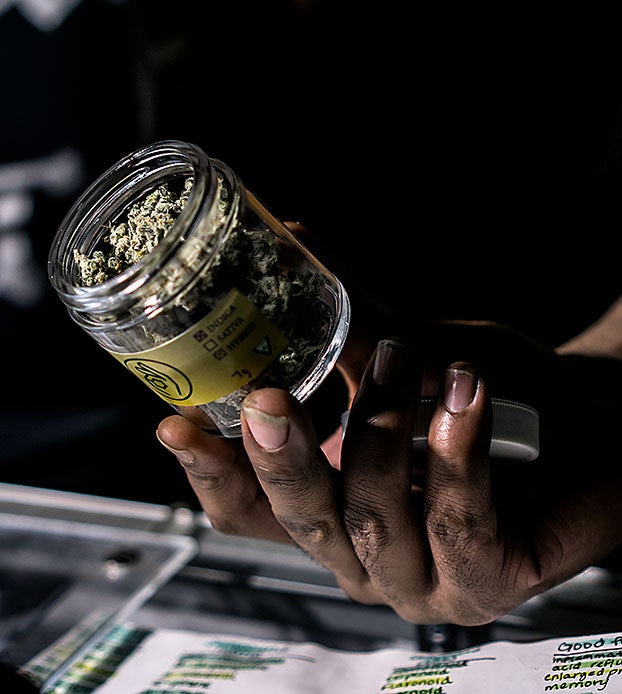This article was first published on Analytical Cannabis. It appears here with permission.
Cannabis, weed, ganja, pot…there is an almost endless list of names used to refer to the Cannabis sativa plant and its products. But when it comes to law and policy, what are the definitive terms we should be using when talking about cannabis? Is the current lexicon used by cannabis industry insiders appropriate?
Not always, according to a new study.
Current approaches are too broad or too specific
Published in Drug Science, Policy and Law, the study is the first of its kind to examine the different nomenclature systems used for cannabis in the worlds of law and academia.
Its author, independent researcher Kenzi Riboulet-Zemouli, concludes that all current lexica uses “weak, ambiguous or inconsistent terms,” underpinned by an “insufficient scientific basis.”
For example, “industrial hemp” and “industrial cannabis” are used interchangeably in many policy and research papers, according to Riboulet-Zemouli. These terms are understood to refer to Cannabis sativa plants containing less than a legally specified amount of the cannabinoid Δ-9-tetrahydrocannabinol. Yet, in some parts of the world, the phrase “cannabis industry” would refer only to companies that work with the more potent adult-use cannabis products, and not those that trade in hemp products.
And where cannabinoid content might be a useful discriminator in distinguishing between “drug-type cannabis” and hemp, the study found that such potency measures almost certainly fail to reliably tell the difference between other cannabis products, such as traditional hashish and a synthetically produced oromucosal spray.
But Riboulet-Zemouli also identified cases where the terms used to refer to cannabis products are too specific, and applied inconsistently between various organizations.
The (–)-trans enantiomer of Δ-9-tetrahydrocannabinol is the only form of THC recognized by the World Health Organizatio’s (WHO’s) Expert Committee on Drug Dependence as occurring naturally in cannabis and exhibiting psychoactive properties. The international nonproprietary name (INN) for this specific enantiomer is dronabinol. Yet, in the public consciousness, dronabinol refers exclusively to the synthetic form of this one specific enantiomer. But in the eyes of the United States Pharmacopeia, dronabinol encompasses all four possible enantiomers of Δ-9-tetrahydrocannabinol.
Creating a new framework of terminology
While these clashes between naming systems are certainly confusing, for the most part it is still possible to navigate the current legal landscape of the cannabis sector with a decent level of mutual understanding.
The fear is that as the industry progresses and creates even more diverse derivatives of the cannabis plant, such clashes will become more frequent and even more troublesome. To deal with this, the industry must create a better nomenclature system, says Riboulet-Zemouli, one that can accurately describe and differentiate between the cannabis plant, the natural cannabinoids that make it up, and the increasing range of synthetic and genetically modified cannabinoids produced by new research.
To achieve this, Riboulet-Zemouli proposes a “bioethical nomenclature” system, which he believes would be more suitable for distinguishing between different cannabis products and derivatives in law and public health policy.
This first axis for consideration is whether the compound already occurs in the natural world, or if it must be artificially produced. Following the example of artificial analogues of nicotine, neonicotinoids, these artificially produced cannabinoids could be termed neo-cannabinoids. On the other side of the spectrum, the naturally occurring phytocannabinoids and endocannabinoids would be known as paleo-cannabinoids, derived from the Greek word palaiós, meaning old.
Further discrimination would be based on how each compound is obtained – it’s method of obtension, as described by Riboulet-Zemouli. Derived from the Greek word poieō, meaning “to make,” Riboulet-Zemouli also suggests a category of poesynthetic cannabinoids, which would include all substances synthetically produced using in vitro chemical synthesis.
Given the need to differentiate between the cannabinoids produced naturally by the biosynthetic pathways of the cannabis plant, versus those made through genetic modification, Riboulet-Zemouli proposes the terms eubiosynthetic (from eû: true) and dysbiosynthetic (from dus: disordered, abnormal), respectively.
The future outlook
Because a “method of obtension” is already an important way of discriminating between different cannabinoid active pharmaceutical ingredients (APIs), the proposed system already has some of the hallmarks of a viable classification system. As such, there is the potential to expand the system in that direction to serve the phytopharmaceuticals sector.
But whether such a “bioethical” naming system is the answer to all the problems presented by other naming systems remains to be seen; Riboulet-Zemouli himself invites other metaphysicians and epidemiologists to give their attention to cannabis nomenclature as the sector matures to evaluate the gaps that need addressing.
Still, in an area where misinterpretation of the law and public health directives can have important legal and health-related consequences, it is important that researchers and policy makers are equipped with the proper language needed, so they can continue to make advancements in their fields.
Sign up for bi-weekly updates, packed full of cannabis education, recipes, and tips. Your inbox will love it.

 Shop
Shop Support
Support
















